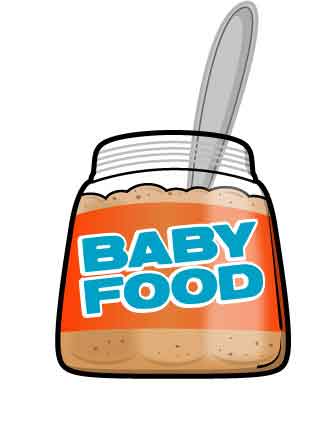Food for babies
Gerecht EU 29 maart 2012, zaak T-41/09 (Hipp & Co KG tegen BHIM / Nestlé)
 Gemeenschapsmerkenrecht. In de oppositieprocedure komt de aanvrager van het woordmerk BEBIO (5, 29, 30, 32, vooral baby-voeding) de houdster van het internationaal woordmerk BEBA (kl. 5, 29 en 30) tegen. De oppositieafdeling wijst de oppositie gedeeltelijk toe, het beroep wordt vervolgens verworpen. Als middel wordt aangevoerd dat de kamer van beroep ten onrechte verwarringsgevaar heeft vastgesteld. Het Gerecht EU stelt vast dat er verwarringsgevaar bestaat (onder verwijzing naar de PAGESJAUNES-uitspraak) omdat er voldaan moet worden aan de cumulatieve voorwaarden (onder verwijzing naar BRICO CENTER-uitspraak) en wijst de middelen af.
Gemeenschapsmerkenrecht. In de oppositieprocedure komt de aanvrager van het woordmerk BEBIO (5, 29, 30, 32, vooral baby-voeding) de houdster van het internationaal woordmerk BEBA (kl. 5, 29 en 30) tegen. De oppositieafdeling wijst de oppositie gedeeltelijk toe, het beroep wordt vervolgens verworpen. Als middel wordt aangevoerd dat de kamer van beroep ten onrechte verwarringsgevaar heeft vastgesteld. Het Gerecht EU stelt vast dat er verwarringsgevaar bestaat (onder verwijzing naar de PAGESJAUNES-uitspraak) omdat er voldaan moet worden aan de cumulatieve voorwaarden (onder verwijzing naar BRICO CENTER-uitspraak) en wijst de middelen af.
56 In any event, it should be noted that the finding of a weak distinctive character for the earlier trade mark does not preclude a finding of a likelihood of confusion in the present case. Although the distinctive character of the earlier mark must be taken into account when assessing the likelihood of confusion, it is only one factor among many involved in such assessment. Thus, even in a case involving an earlier mark of weak distinctive character, there may be a likelihood of confusion on account, in particular, of a similarity between the signs and between the goods or services covered (see Case T‑134/06 Xentral v OHIM – Pages jaunes (PAGESJAUNES.COM) [2007] ECR II‑5213, paragraph 70 and the case-law cited). Even if the component ‘beb’ can be considered to be descriptive of the goods in question and, therefore, the earlier mark is itself considered to be weakly distinctive, the degree of similarity between the goods covered by the marks at issue and the degree of similarity between the marks themselves, considered cumulatively, are sufficiently high to justify the conclusion that there is a likelihood of confusion (see, to this effect, judgment of 28 June 2011 in Case T‑475/09 ATB Norte v OHIM – Bricocenter Italia (Affiliato BRICO CENTER), not published in the ECR, paragraph 64).
57 It follows from all of the foregoing that, in the circumstances of the present case, there is a likelihood of confusion between the marks at issue. Given that the goods concerned are similar, or indeed identical, and given the degree of similarity of the signs at issue, particularly from the conceptual point of view, the Board of Appeal rightly held that there was a likelihood of confusion between the marks at issue.




















